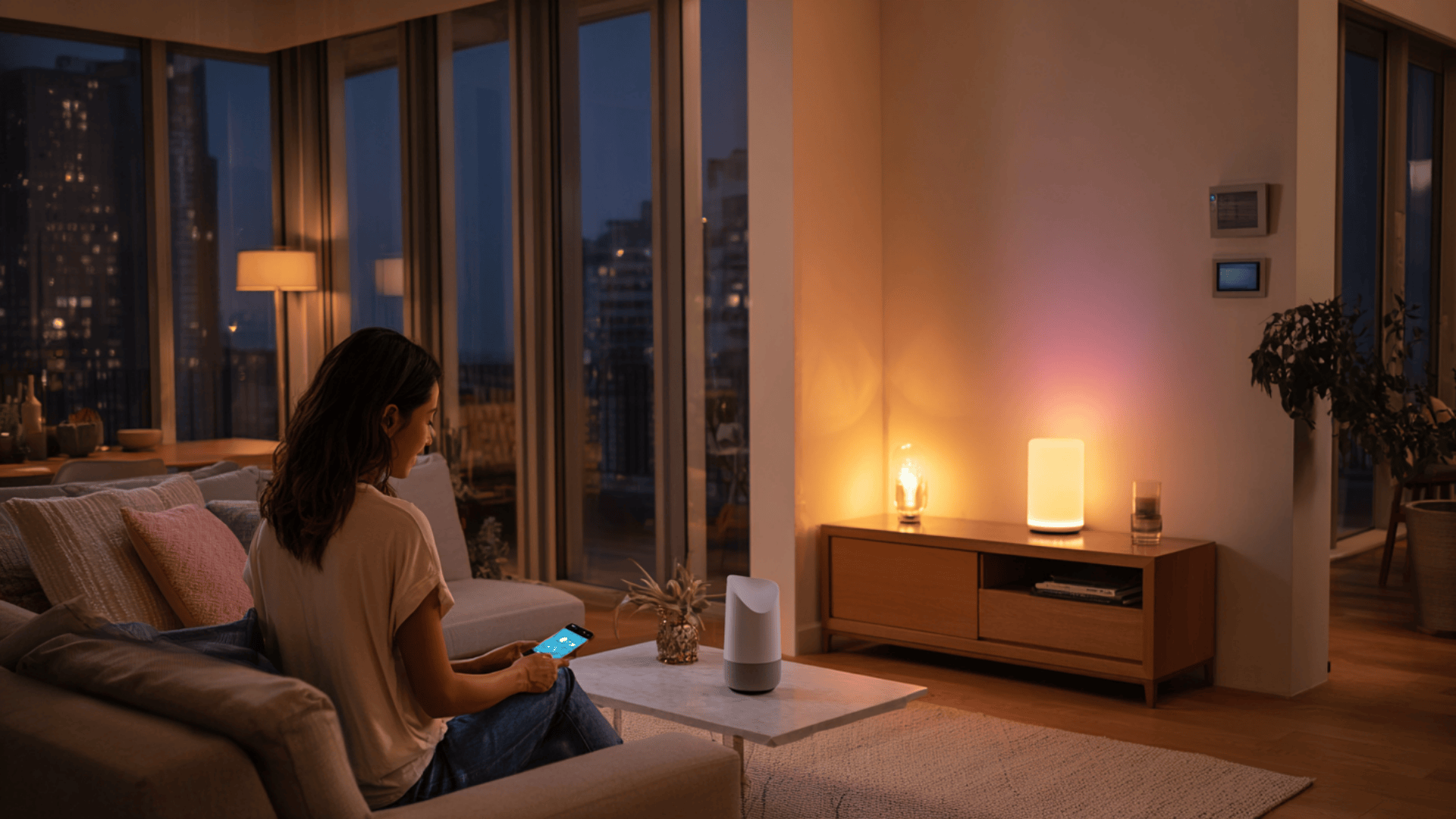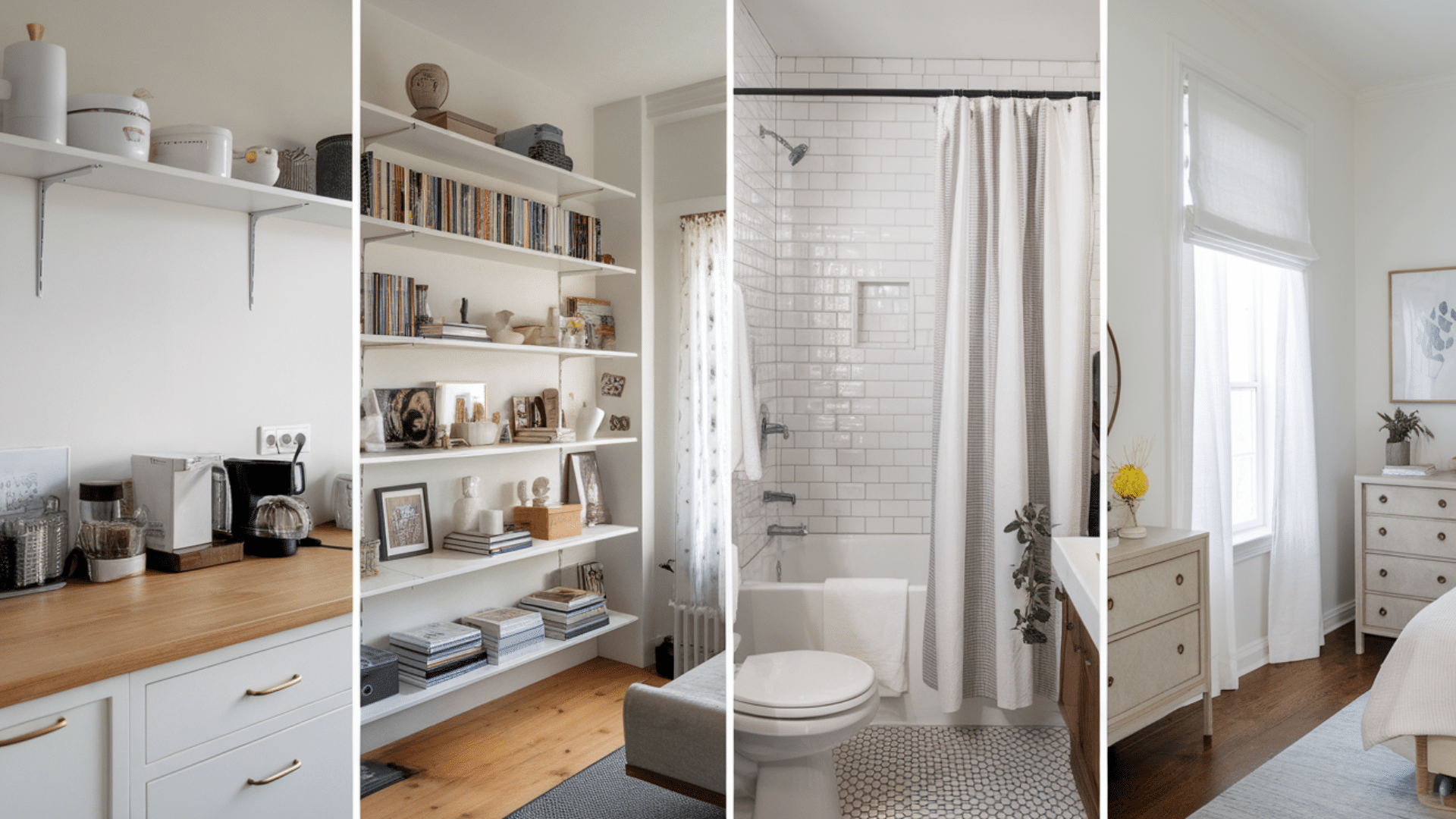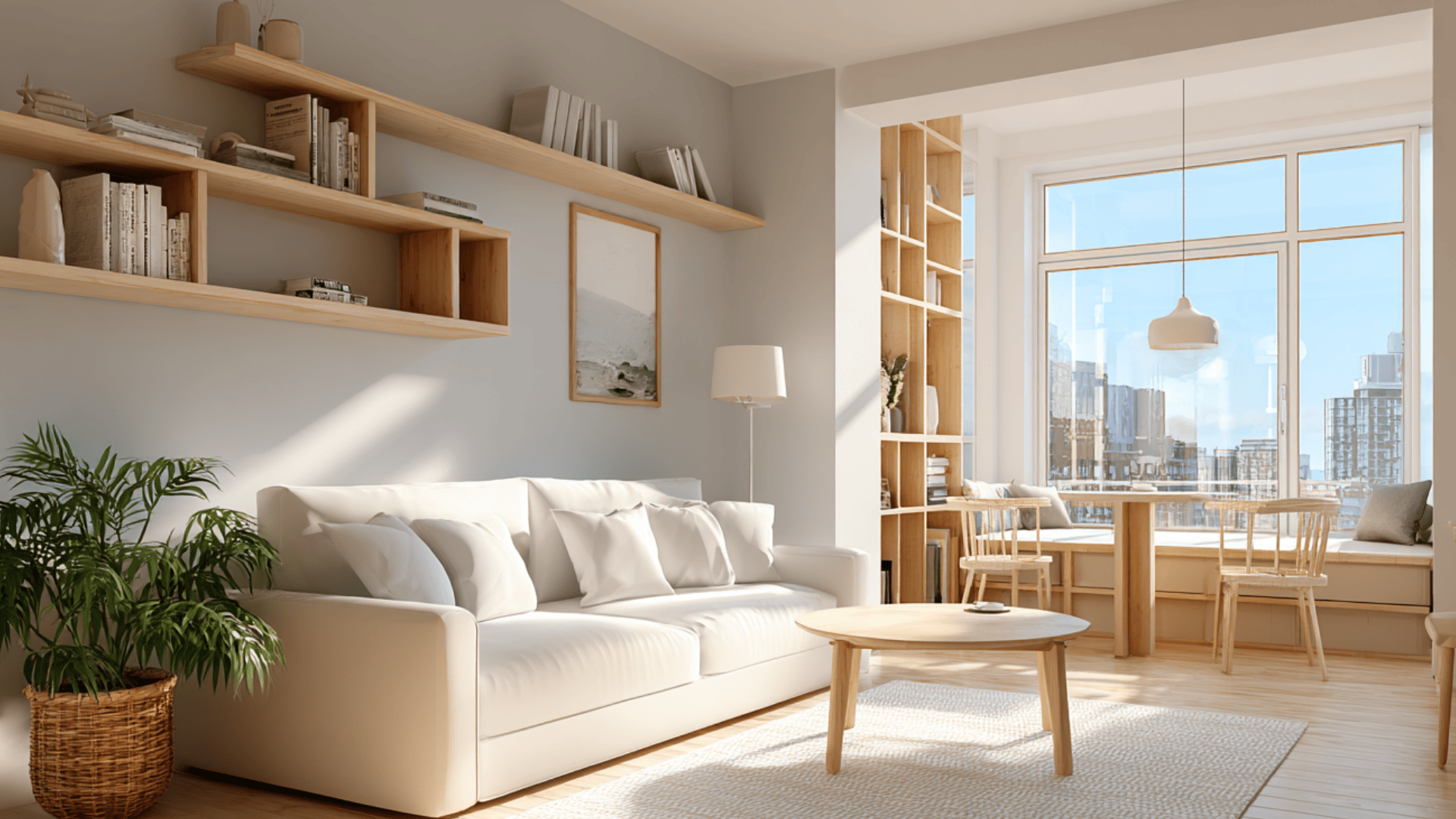Turning your house into a smart home isn’t just about cool gadgets; it’s about convenience, comfort, and control.
A proper home automation installation helps you manage lighting, climate, security, and entertainment from one place, saving time and energy every day.
With today’s technology, even a beginner can create an automated home that learns your habits and makes life easier.
Today, I’ll walk you through how these systems work, how to plan for them, their costs, and which devices offer the best value. You’ll also find practical tips on safety, upgrades, and troubleshooting to keep everything running smoothly.
What is Home Automation Installation?
Home automation installation means setting up devices and systems that let you control parts of your home automatically. It connects everyday features like lighting, temperature, and security through a smart hub or app.
The main goal is to make life easier, safer, and more energy-efficient. I’ve seen people start small, maybe with smart lights, and later expand to control everything from door locks to sprinklers.
Here are a few examples of what home automation can include:
- Lighting systems: Dim, schedule, or change color using an app or voice.
- Security devices: Smart cameras, locks, and motion sensors.
- Climate control: Smart thermostats that learn your habits.
- Entertainment: Multi-room audio or voice-controlled TVs.
Once set up, these systems can run automatically or respond to your voice, phone, or motion sensors.
How Home Automation Works
Home automation works by linking your devices to a central system that manages how they communicate and respond.
Central Hub Concept
A hub is like the brain of your smart home. It connects all your devices, even if they’re made by different brands. Popular options include Home Assistant, Control4, SmartThings, or Google Home.
Device Communication
Smart devices talk to each other through wireless technologies like:
- Wi-Fi: Great for easy setup and fast response.
- Zigbee or Z-Wave: More stable for larger homes; ideal for lighting and sensors.
- Matter: A new universal standard that helps different brands work together smoothly.
These systems keep everything connected and responsive without needing separate apps for every device.
The Role of Apps and Voice Assistants
You’ll manage most smart devices using a smartphone app or a voice assistant like Alexa, Siri, or Google Assistant. The apps let you set routines. For example, turning off all lights at bedtime or adjusting the thermostat when you leave home.
Voice assistants make control even easier. Just say, “Turn off the living room lights,” and your system handles it instantly.
Plan Your Smart Home Setup
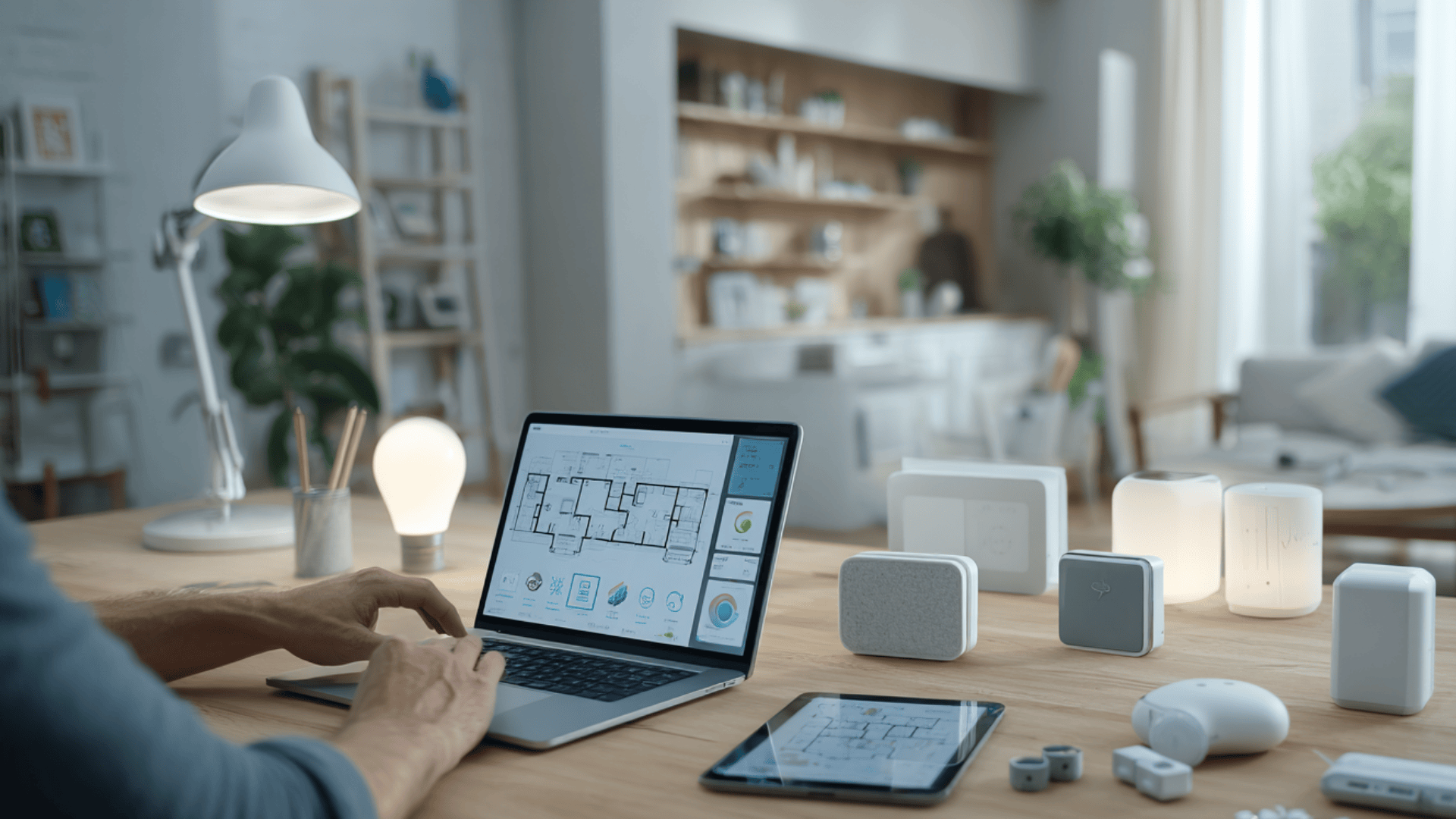
Before setting up your smart home, take time to plan. It helps you stay organized, spend wisely, and avoid technical issues later.
- Set your goals: Decide what matters most: comfort, convenience, security, or energy savings, so your setup fits your lifestyle and daily routine.
- Pick starting points: Begin with high-use rooms like the living room or bedroom and focus on essential devices such as lights, thermostats, or locks.
- Plan your budget: Estimate device costs, wiring, and possible installation fees to stay within budget and avoid hidden expenses.
- Think ahead: Choose products that support Matter, the new universal standard that helps devices from different brands work together reliably.
- Check your network and wiring: Ensure your Wi-Fi signal covers every room and that you have enough outlets and proper wiring for all devices.
- Test before expanding: Start small, make sure everything runs smoothly, then add more devices or rooms as your system grows.
Choosing Between DIY and Professional Installation
Before setting up your smart home, you’ll need to decide whether to do it yourself or hire a professional. Each option has its pros and cons depending on your budget, time, and comfort with technology.
DIY installation gives you control and saves money, but it takes effort and patience. Professional installation costs more but offers convenience, reliability, and expert support.
| Feature | DIY Installation | Professional Installation |
|---|---|---|
| Cost | Lower overall; you only pay for the devices you buy. | Higher upfront cost; includes labor and setup fees. |
| Skill Required | Basic to moderate technical knowledge needed. | None; everything handled by certified technicians. |
| Setup Time | Slower; depends on your experience and number of devices. | Faster; professionals complete setup efficiently. |
| Flexibility | Full control over placement and customization. | Guided setup; tailored based on your preferences. |
| Support | Limited; you handle troubleshooting yourself. | Full support, warranty, and post-install service. |
| Best For | Smaller homes or basic smart setups. | Large homes or complex systems needing integration. |
When to hire a pro: If your setup includes electrical wiring, full-home lighting, or advanced security systems, it’s safer and easier to use a professional installer.
Home Automation Services
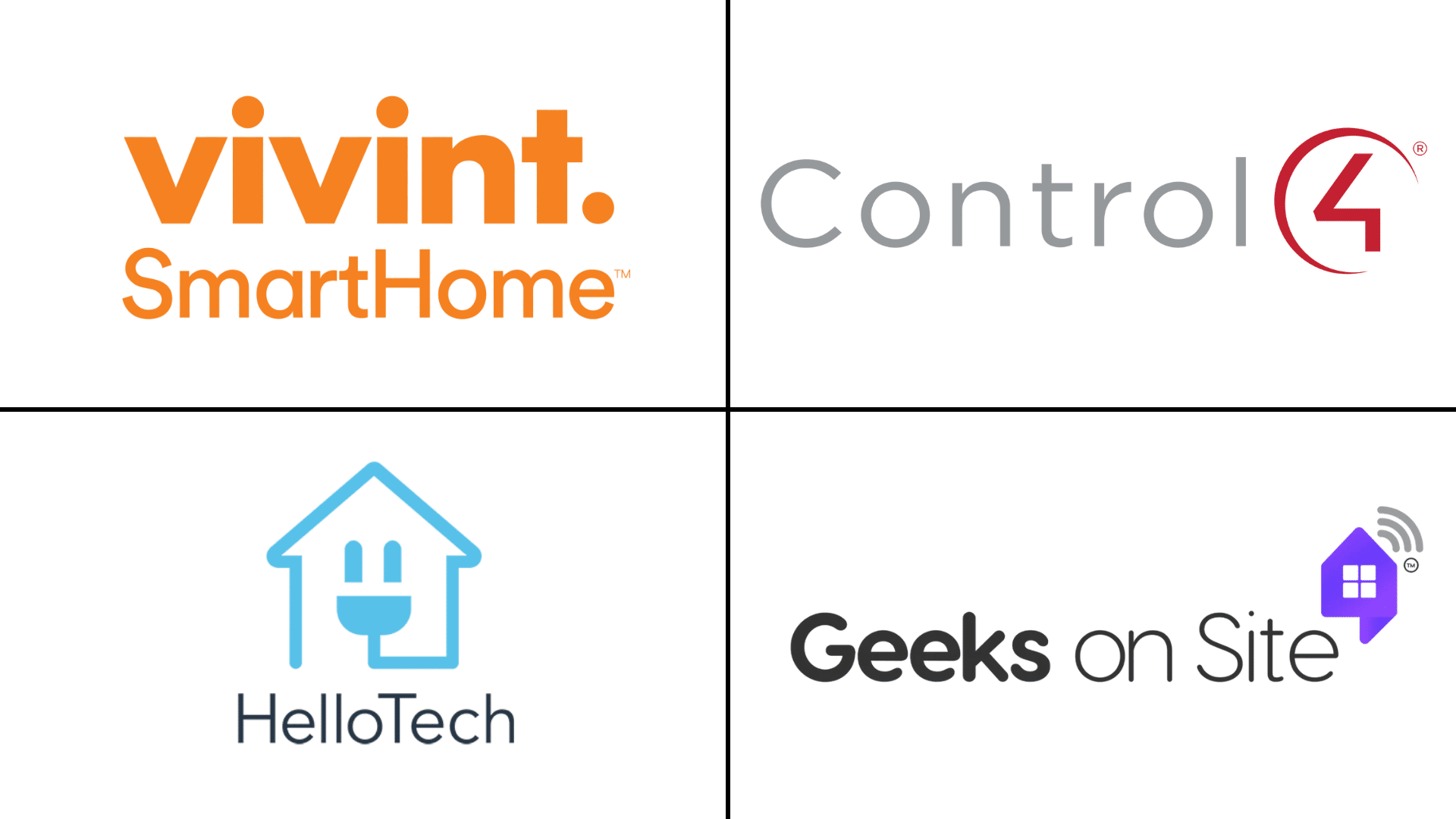
If you’d rather have someone handle the setup for you, a smart home installation service can make things easier. These experts take care of wiring, device pairing, and system setup so everything works together smoothly from day one.
Here are some trusted U.S.-based companies that offer professional smart home installation:
1. Vivint Smart Home
Based in Utah, Vivint provides complete smart home solutions, including security systems, lighting, and climate control. Their trained installers handle everything, from wiring to setup, and make sure your home runs efficiently and securely.
2. Control4
Control4 offers advanced home automation through certified installers across the U.S. They design custom systems that integrate lighting, entertainment, and security into one easy-to-use platform.
3. HelloTech
HelloTech operates nationwide and sends local technicians to install and connect your smart devices. They cover everything from smart locks to thermostats and provide same-day service in many areas.
4. Geeks on Site
Geeks on Site helps homeowners with setup, troubleshooting, and maintenance of smart home devices. Their team installs hubs, connects devices, and ensures your system is reliable and easy to manage.
Professional installation costs more upfront, but it saves time, prevents setup mistakes, and ensures everything works perfectly from the start.
It’s a worthwhile investment if you want a smooth, hassle-free smart home experience.
Step-by-Step Installation Guide
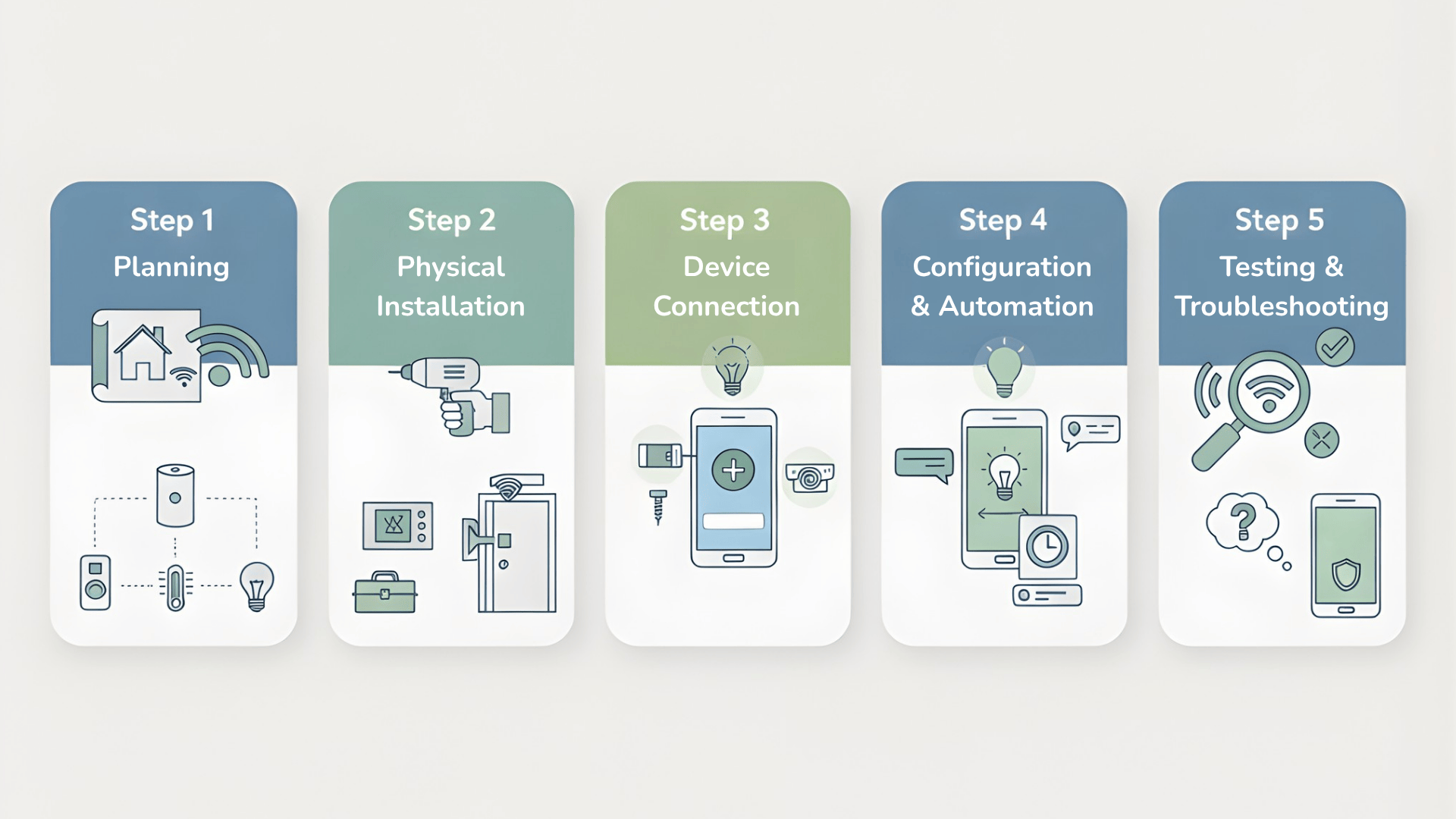
Setting up your smart home can be simple if you follow the right steps. Whether you’re starting small or building a full system, these steps help you get everything running smoothly.
Step 1. Choose a Central Hub or System
Pick a hub that connects all your devices and lets them work together. Popular options include Home Assistant, SmartThings, Alexa, and Google Home. Choose one that fits your device brands, budget, and preferred level of control.
Step 2. Select Devices and Sensors
Decide which smart devices you want to start with. Common picks include lights, thermostats, locks, cameras, and plugs. Focus on the ones that add real convenience to your daily routine before expanding your setup.
Step 3. Install and Connect Devices
Follow each product’s instructions carefully. Place sensors and cameras where they cover the most area, and make sure lighting or plugs are near power sources.
If wiring is required, always turn off power first or hire a licensed electrician for safety.
Step 4. Configure the System
Once devices are installed, connect them to your hub or app. Set up scenes and automations like turning off lights when you leave or adjusting the temperature before bedtime. Group similar devices together to make control simpler.
Step 5. Test and Troubleshoot
After setup, test each device to ensure it responds correctly. Check Wi-Fi strength, app connections, and automation timing.
If something doesn’t work, restart the hub or re-pair the device; most issues come down to connectivity or power. Once everything’s synced, you’ll have a system that runs smoothly and fits your lifestyle.
Smart Home Installation Cost Breakdown
Here’s a quick look at what you can expect to spend on common smart home devices and installation services. Prices are based on verified averages from major U.S. providers.
| Category | Device Cost (USD) | Professional Install (USD) | Notes |
|---|---|---|---|
| Smart Thermostat | $140–$260 | $130 | Popular models from Ecobee and Nest; pro setup ensures wiring safety. |
| Smart Lock | ~$200 | Usually DIY | Most homeowners install these themselves in under an hour. |
| Smart Bulbs (4-pack) | ~$50 | None | Simple plug-and-play; easy to expand to more rooms later. |
| Indoor Cameras (1–2 units) | $100–$300 each | $130 | Pro setup helps with placement and secure network connection. |
| Video Doorbell | $100–$250 | $150 | Installation includes mounting and app configuration. |
| Smart Hub or Bridge | $100–$250 | Optional | Needed for some ecosystems; often DIY setup. |
Additional Costs:
- Labor add-ons: $130–$150 per device setup on average.
- Hidden costs: Wiring, outlet upgrades, mounts, or adapters ($20–$100+).
- Subscriptions: Cloud storage or monitoring plans around $20 per month.
- Upgrades: Device replacements every few years as tech evolves.
Estimated Totals:
- Basic DIY setup: Around $390–$510 (thermostat, smart lock, starter lighting).
- Partial professional setup: Add about $260–$300 for thermostat and camera installation.
Planning your smart home budget early helps you stay in control and avoid surprise costs. Start small, invest in quality devices, and expand as your needs grow.
Top Smart Home Systems and Devices

Current smart home systems are more reliable, flexible, and connected than ever. Here are the leading options based on your budget and level of control:
1. Control4
Control4 is a premium, whole-home automation system that connects lighting, security, entertainment, and climate. It’s professionally installed and ideal for homeowners who want a polished, hands-off setup.
2. Home Assistant
Home Assistant is an open-source, DIY platform that gives you full control over your smart home. It works locally, supports most brands, and keeps your data private, perfect for tech-savvy users who like to customize.
3. Savant / Crestron / URC
These luxury systems are built for high-end homes with advanced automation needs. They offer multi-room audio, custom lighting, and seamless control through professional installation and setup.
4. TP-Link, Wyze, Aqara (Budget-Friendly Ecosystems)
These brands make smart devices affordable and easy to use. TP-Link is reliable for lighting and plugs, Wyze offers low-cost cameras, and Aqara provides compact devices that connect well with major hubs.
Keeping Your Smart Home Safe, Efficient, and Easy to Maintain
- Protect your network: Use a strong, unique Wi-Fi password and update it regularly. If possible, create a separate network just for your smart devices to keep your main data safer.
- Enable extra security: Turn on two-factor authentication for your smart home apps or hubs. It adds a second layer of protection against unauthorized access.
- Keep devices updated: Check for firmware and app updates at least once a month. Updates fix bugs, patch security gaps, and help devices stay compatible.
- Use automation to save energy: Set schedules for lights, thermostats, and plugs so they only run when needed. Simple automations can reduce power use and lower monthly bills.
- Add new devices wisely: Choose products that support open standards like Matter. It ensures new devices will work easily with your existing setup as your system grows.
- Back up your settings: Most smart home apps allow backups of automations and preferences. Doing this before adding or upgrading devices helps you restore everything quickly if needed.
A little upkeep goes a long way. These steps keep your system secure, your energy use low, and your smart home running smoothly.
Troubleshooting Common Smart Home Issues
Even the most reliable smart homes can run into small problems. Luckily, most of them are easy to fix once you know what’s causing them.
Connectivity Failures
When devices disconnect or lag, check your Wi-Fi first. Restart the router and make sure your signal reaches every room. If you have many devices, consider a mesh network to keep everything stable and responsive.
Hub Offline Errors
If your hub goes offline, unplug it for 10–15 seconds and plug it back in. Check your internet connection and app settings. Updating the hub’s software often resolves persistent offline issues.
Device Not Responding
If a smart bulb, plug, or lock isn’t responding, power it off for a few seconds, then back on. Try removing and re-adding it in your app. Weak Wi-Fi or outdated firmware are the usual culprits.
Reset and Re-Sync Process
When nothing else works, do a factory reset on the device and reconnect it to your hub. Re-syncing clears old data and connection errors, giving your system a clean start. Always back up your automations first so you don’t lose your routines.
Wrapping Up
Building a smart home is more than just installing gadgets; it’s about creating a space that feels safer, more efficient, and truly works for you.
A well-planned home automation installation helps you save time, cut energy use, and manage daily routines with ease.
As I see it, the best setups are the ones that grow with you, flexible, secure, and easy to maintain. Whether you start small or go all-in, focus on systems that fit your lifestyle and budget.
Ready to get started? Begin with one smart upgrade today and experience how a connected home can make everyday life smoother.

